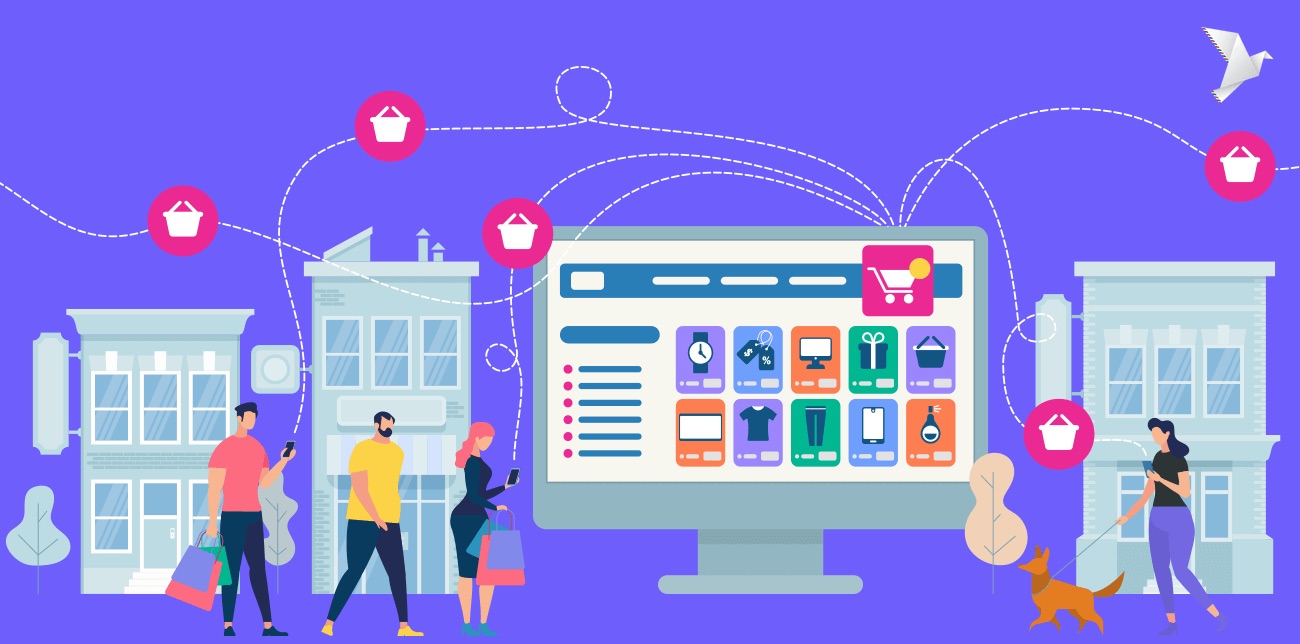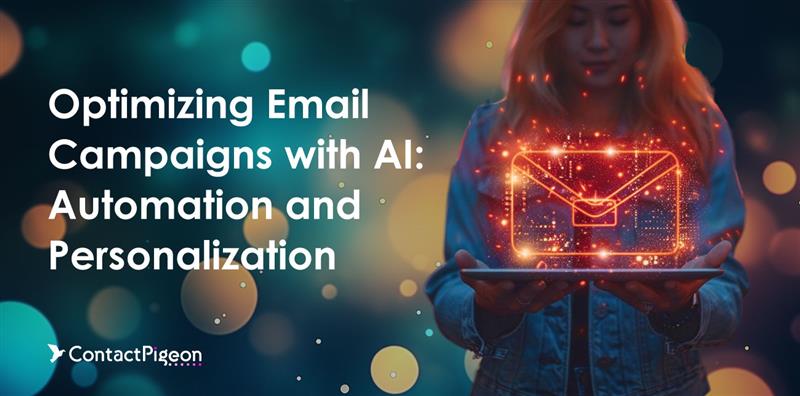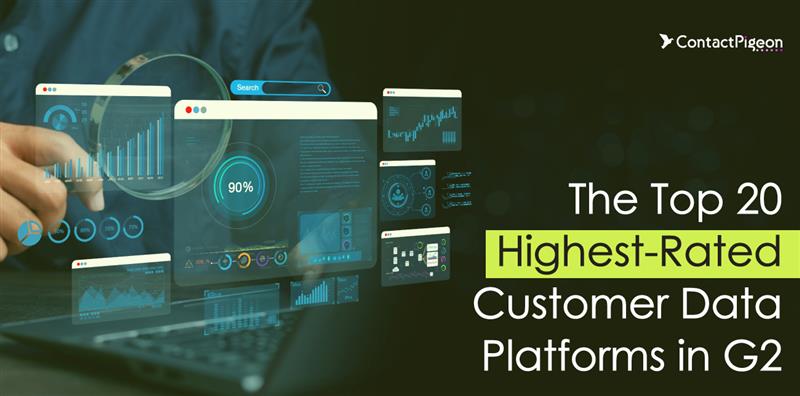Savvy marketers know that the boom of eCommerce is setting market trends for online retailers. The influence of the annual growth of eCommerce is perhaps best illustrated by recent statistics. In 2017, global e-retail sales reached 2.3 trillion U.S. dollars, of which, retail eCommerce accounted for 10.2% percent. The shift to online retailing is only accelerating, while new computing trends such as predictive modeling and AI introduces unique shopping experiences for consumers that are ever more personalized. So, how can eCommerce personalization help your brand in 2021 to capitalize on the skyrocketing online marketplace?
To personalize or not to personalize? It’s not even a question…
Look at this one simple fact: in 2017, poor personalization created a lack of trust and cost businesses losses of an estimated $756 billion. Now, compare that to those who have mastered personalization and win over their customers’ trust and wallets, every time. Their story is quite different. In fact, it’s estimated that by 2021, eCommerce businesses that use a smart personalization software will see as much as a 15% increase in their profits.
Personalization is the future of online shopping. And, at the forefront of this evolution is technology. AI eCommerce personalization advances make it possible for online retailers to offer customers tailored experiences across all channels and at every point in their shopping journey. With personalization, you have the ability to influence potential customers’ research, whether they purchases or not, and more. The result is a quicker, more enjoyable and seamless experience for your customers. And, happy customers spend more money.
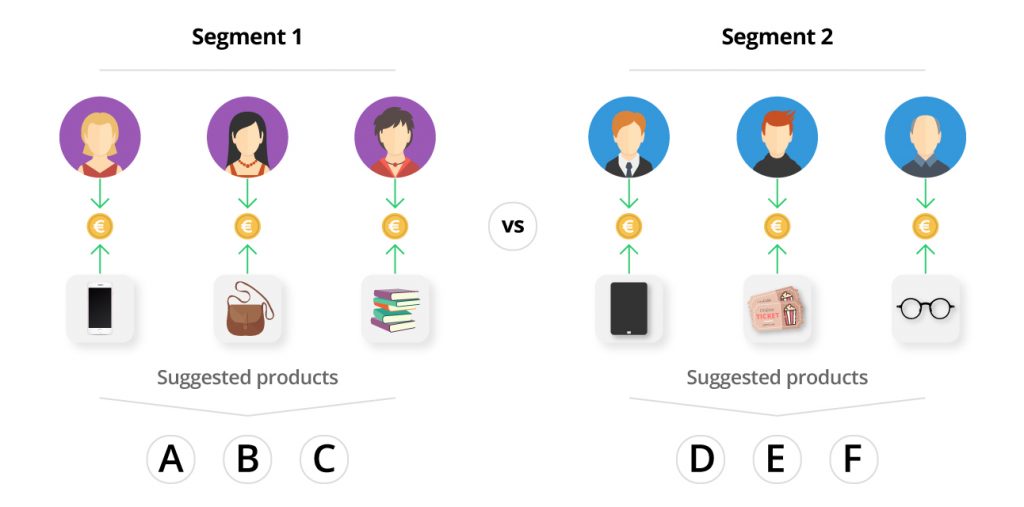
Personalized product recommendations based on past browsing history and interests
The bottom line is that if you are not offering a personalized shopping experience to your visitors, you are missing out — big time. Still not convinced you to need to implement eCommerce personalization? Consider that nearly half of US consumers say they are more likely to make purchases with companies that personalize experiences. Now, that’s a lot of sales opportunities for your brand that you simply can’t afford to miss out on.
In this post, we have gathered our top picks for the best eCommerce personalization examples to share with you and try out for yourself. Let’s examine what it takes to create a successful eCommerce personalization strategy for your brand.
What is eCommerce Personalization?
It’s important that online marketers understand exactly what personalization means in eCommerce so you can implement a successful eCommerce personalization strategy.
Ecommerce personalization means presenting relevant, actionable suggestions to consumers in such a way that enhances the online shopping journey to be a more efficient, enjoyable and rewarding experience. This is often achieved by harnessing the power of marketing automation and segmentation. Together these tools help to gather, analyze and react to data on shoppers’ web behaviors, demographics, and other relevant inputs.
The benefits of personalization
There are many benefits of using personalization and hyper-personalization in your eCommerce marketing campaigns — not only for you but for your customers as well.
The reality for online marketers is that if you are not currently using eCommerce personalization as a part of your marketing strategy, you are not only passing up an opportunity to boost your sales, you are actually losing sales. That’s right. If you don’t currently use a personalized software, you are potentially losing 75% of shoppers who leave the website because they get frustrated by offers of irrelevant content and products.
• Customers spend more, on repeat
Just like a brick and mortar shop, online shoppers want personalized attention in your eShop for a stress-free and productive shopping journey.
The latest eCommerce personalization stats show over 31% of shoppers say that when businesses take the time to learn about their needs to personalize recommendations, it adds value to their shopping experience with that specific brand. The result: a healthy relationship based on loyalty, trust and returning customers.
As recent eCommerce personalization trends show, 48% of consumers increase their spending as a result of personalization and it also drives impulse and repeated purchases.
• Recommending products boosts your ROI
Using personalization, you can boost your ROI by adding value to the customers’ shopping journey with something as simple as implementing user-generated recommendations. One example is showing customers product recommendations based on other visitors. “Visitors who viewed the same product also viewed” is the top product recommendation type that can bring in as much as a 68% of the total ROI for eCommerce shops.
Another way that tailored recommendations bring value to the shopping experience is that it helps with product discovery. All it takes is bringing attention to products that a customer may not have noticed during her search. A perfect example of this eCommerce tactic is how Amazon presents items “Inspired by your Wish List”. Using the customer’s own personal tastes to suggest products in tune with their wants and needs, thus, increasing conversion rates.
Finally, recommending products boosts your ROI by increasing the average order value since consumers may be inspired to pick up products that they didn’t intend on purchasing when they first entered your online shop. This is a common cross-sell tactic, that recommends complementary products to those in the user’s shopping cart. An example is recommending “Products that go well with…” as well as using peer-based recommendation model, such as recommending products “Frequently bought together”.
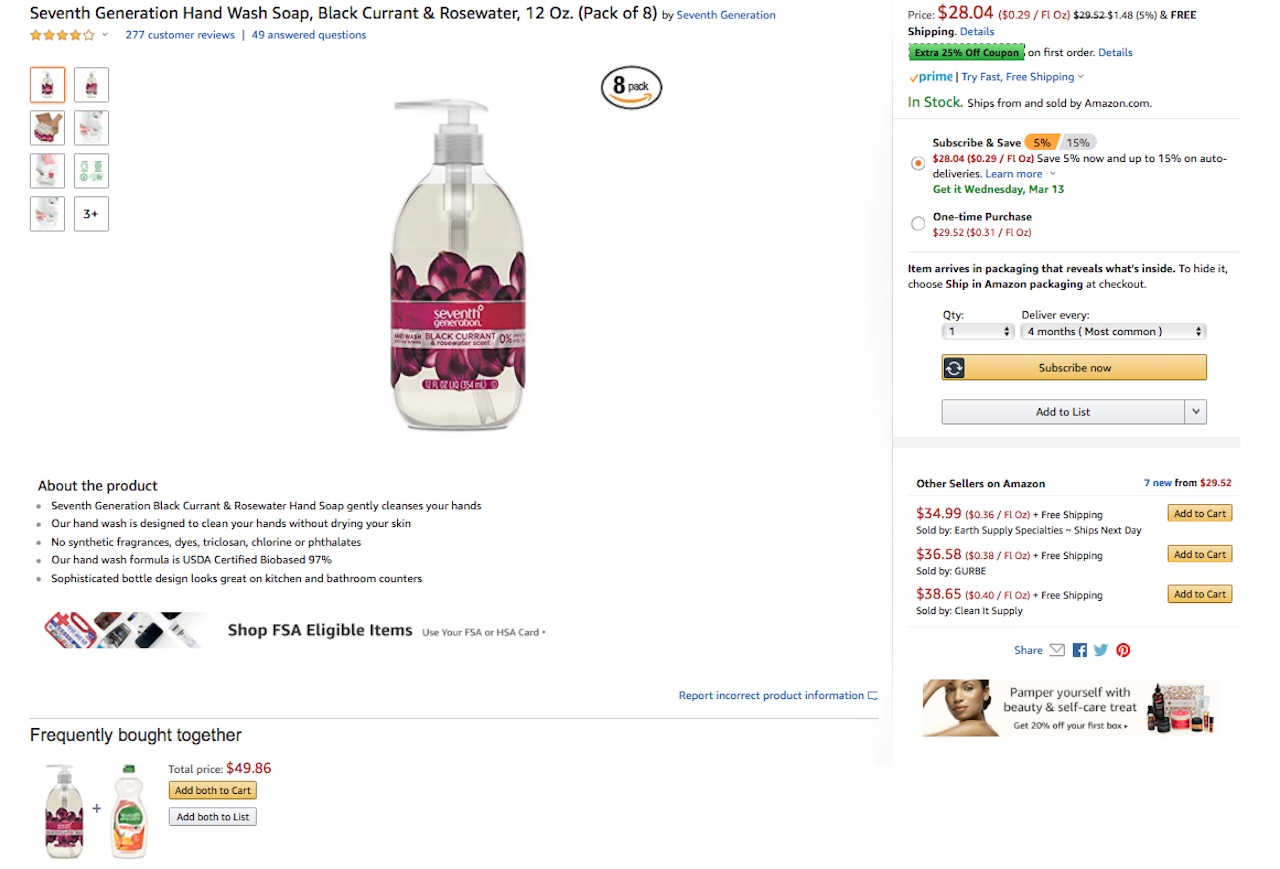
4 Awesome Ecommerce Personalization examples
When you have a top-notch eCommerce personalization tool to pull data to create an exceptional shopping experience tailored to each individual shop on your site, you’ll create a winning campaign, every time.
For eCommerce marketers, this means you can target specific customers by splitting up your contacts based on gender, geolocations, similar interests, demographics, activity, purchase history, and more. Then, all that’s left is to use our up-to-date real-time analytics to always be on target with your messages.
Now that you have an idea as to how and what you can accomplish in your own eCommerce personalization marketing strategy, check out these simple and straightforward ideas and tips and give them a try:
1. Send personalized email based on user behavior
Take it from the leader of the pack — Amazon. Email marketing is still one of the top options for reaching your customers and it’s something that Amazon does well. Like, really well.
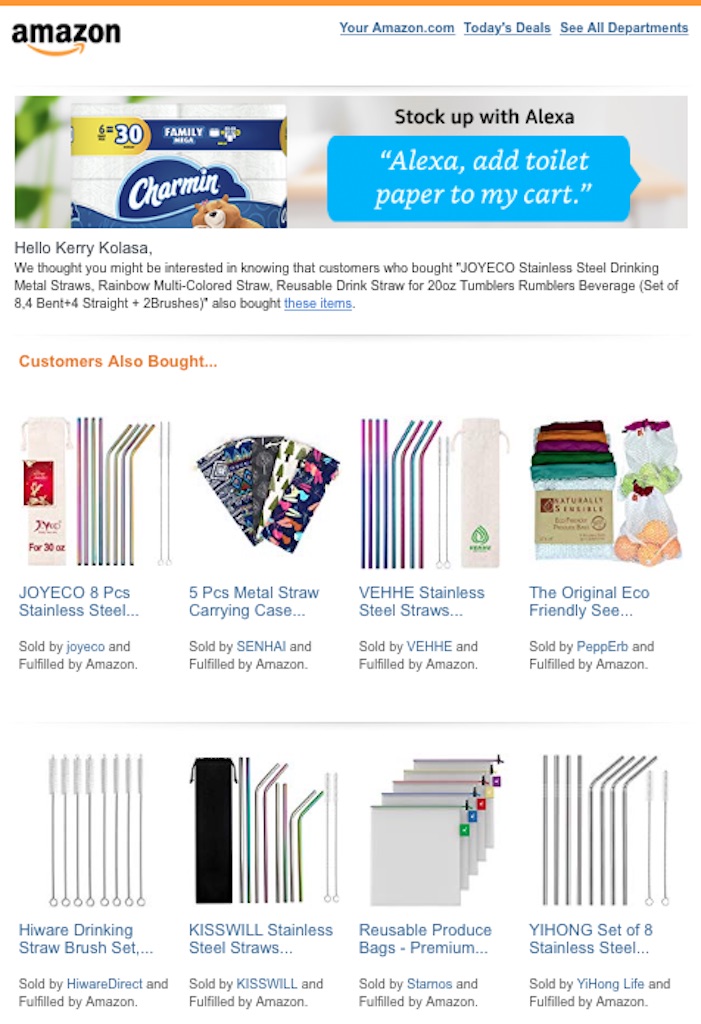
Using an automated platform, Amazon automatically sends a variety of tailored triggered messages, based on their customers’ web-behaviors. This awesome eCommerce personalization example is something that every marketer can and should be doing on a daily basis. You can send browse abandonment emails, abandoned shopping cart emails, personalized incentives such as discounts, promotions and sales, etc., all based on previous web behaviors and purchase history of your customers.
Tip: Using marketing automation tools such as abandoned cart recovery emails, you can recover sales as nearly 40% of all cart abandonment emails are opened. While over 10% of abandoned cart recovery emails are clicked, 30% of those abandoned cart recovery emails clicked lead to a returning order!
2. Recommend product categories based on browsing behavior
When it comes to shopping online, it’s really easy for your visitors to leave your site and find a better deal from your competitors. That’s why you need to keep shoppers engaged and make their shopping experience more enjoyable by tracking their past browsing or purchase history to make relevant product recommendations.
Big box retailer Home Depot has mastered this eCommerce personalization practice. Once you visit Home Depot’s site, the next time you go to their home page, you’ll see product recommendations that are based on your recent purchase or browser history.
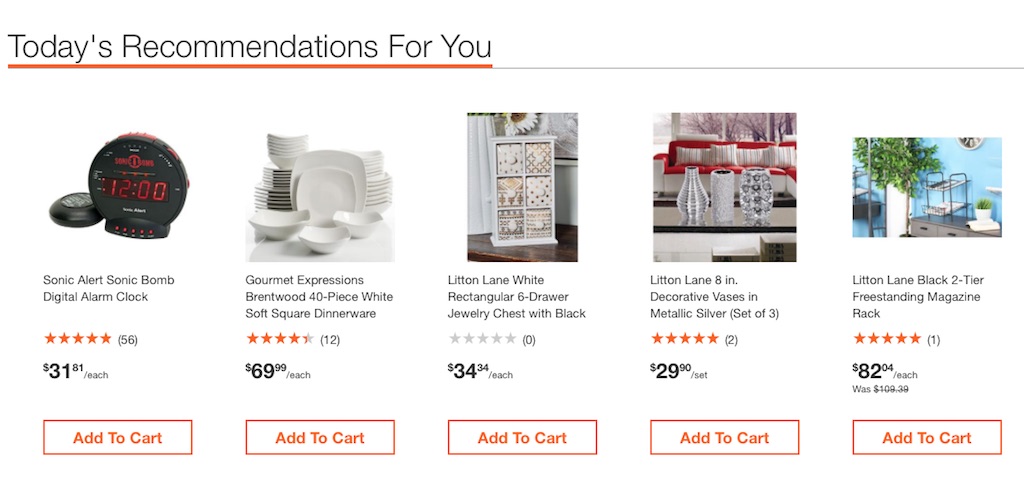
3. Use geo-location targeting
Another retail giant, Wal-Mart, recently rolled out a newly designed website geared at creating an uber-personalized shopping experience for their visitors. One of the primary goals of the new website is to market to visitors based on each individual customer’s location to customize their homepage experience. This allows them to show shoppers products that they may like based not only on previous purchases but also by what is trending in their location and other influencers such as the local weather.
Tip: Don’t forget to use geo-location targeting in your personalized email campaign! As much as 60% of marketers say that by using real-time data in email such as context relevant to the user’s local weather, location and so on, they increase their conversion rates!
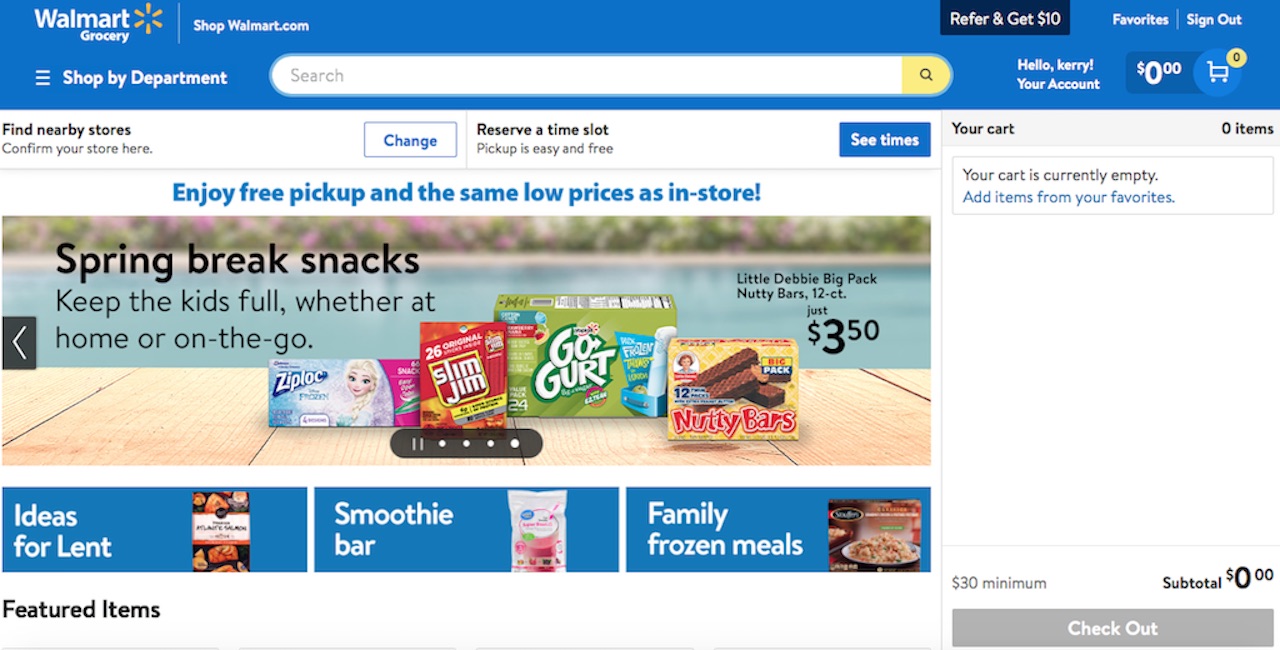
4. Adjust your homepage and navigation based on visitor interests
ASOS clothing retailer is a great example of taking personalization to the next level. By asking their customers a simple question: “Are you shopping men or women?” they are just a click and save away from adding convenience to their shopper’s journey. The next time a visitor types in their URL, they are automatically redirected according to their previous preference.
Tip: Since return rates from eCommerce sales are 2 to 4 times greater than in brick-and-mortar retail try following ASOS’ lead and ask for additional relevant information for your products and services. ASOS asks for height and weight as well and saves this information to help recommend its customers the best size across their pages and products — saving customers (and themselves) the headache of dealing with annoying returns due to misfits.
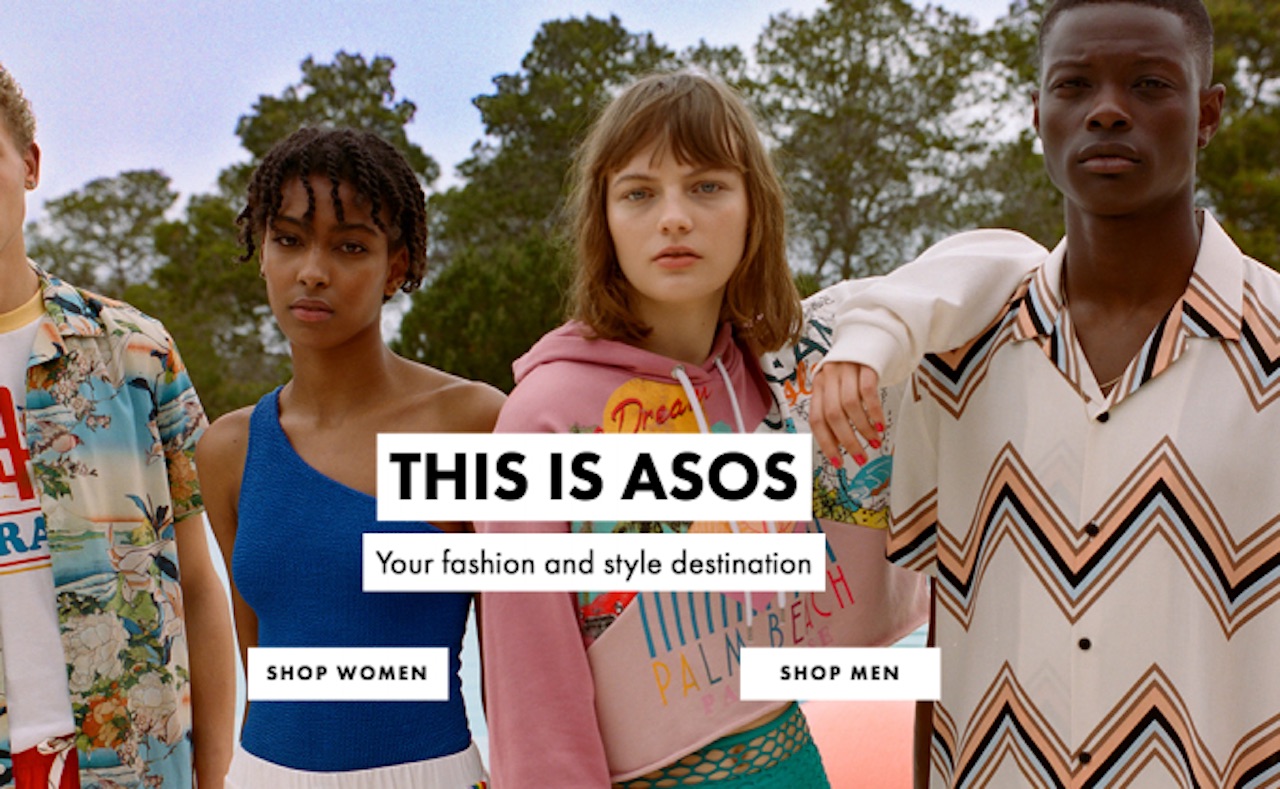
What to look for in an ECommerce Personalization tool for your enterprise
Personalization is the future of eCommerce marketing and the more insights you gather to enrich your customer profiles, the more targeted and personalized your messages will be.
If you are a small to medium-sized business when it comes to marketing automation for enterprises, one thing is clear: a freemium solution that suits you today, might not be able to grow with your brand tomorrow. Using a freemium solution you might be able to get started on personalization (particularly when it comes to email marketing), however, the trick is to segment your customers into subgroups and create targeted campaigns that speak to each of these groups.
Although a robust personalization tool can be expensive, you get what you pay for. And, after looking at the many benefits of eCommerce personalization, you can’t afford to promote your eCommerce shop with poor personalization tactics. That’s why choosing an eCommerce personalization tool that best suits your business needs is crucial. For businesses serious about building a personalized online experience, its worthwhile to go for a sophisticated tool such as ContactPigeon — we offer an integrated solution that allows you to build enriched consumer data and use them for the personalized campaign — without much integration needs.
From transforming your newsletters into powerful, personal, one-on-one messages to reach customers with the correct, relevant messages to triggering those messages to send at the optimal time — really, with the right eCommerce software the possibilities of personalizing your visitors’ shopping journey are endless. So what exactly should you expect from your eCommerce personalization tool? We’ve broken it down for you:
• In-depth behavior tracking
First off, your eCommerce personalization tool needs to have capabilities to track behavior, such as coherently understanding what visitors are doing on your website. This way, it will also allow you to trigger real-time responses and messages to help keep users engaged with your brand, even after they have left your site. Having the ability to respond in real-time to activity or sequence of actions customers have taken is vital for a successful eCommerce personalization strategy.
• Dynamic content generator
Your eCommerce personalization tool should also enable you to generate dynamic content (preferably rule-based) by injecting personal content to your website, marketing campaigns, dynamic landing pages, and more. By offering well-designed and relevant content to your visitors you enhance the shopping journey and boost conversions.
• Powerful analytics & segmentation
A dynamic eCommerce personalization tool gives marketers the ability to built an integrated customer profile with the data collected from website, campaign histories and other 3rd party sources. This way, you are able to build lists, segment and group your visitors based on their web behaviors and target them with relevant messages and information.
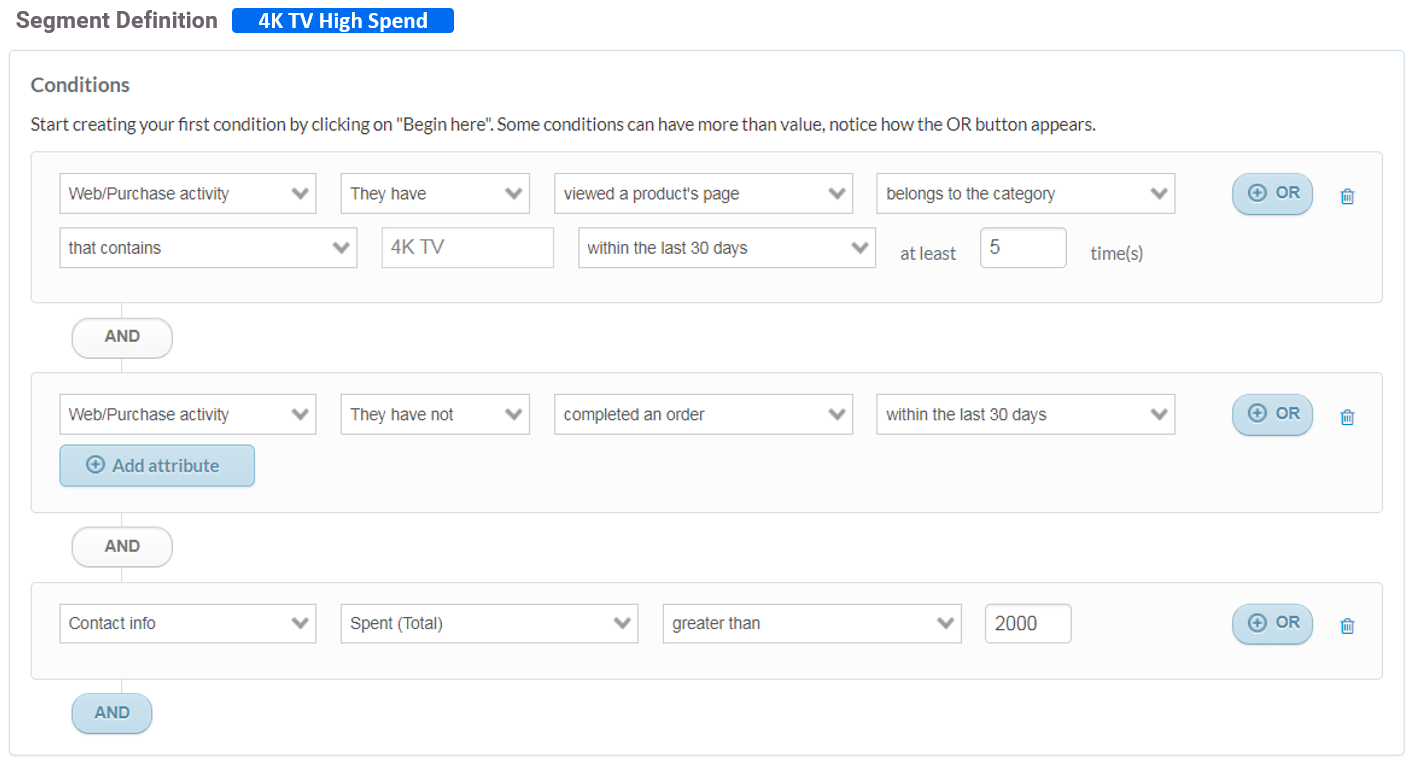
ContactPigeon’s segmentation feature.
Taking your brand to the next level
Now that you’ve completed our crash course on eCommerce personalization, you should feel familiar with personalization and how to best apply it to your brand. We’ve gone over personalization, why it’s important for eCommerce marketers, and shared with you some of the best eCommerce personalization examples. When it comes to selecting an eCommerce personalization tool, we broke down what you can expect from a dynamic sophisticated software, and how it best suits your business needs. Make 2021 all about creating an enhanced personalized shopping experience for your customers and taking your brand to the next level. We have more tips to share with you — read on and check out our ultimate marketing automation guide for 2021. We’ve included lots of goodies in there, too!


